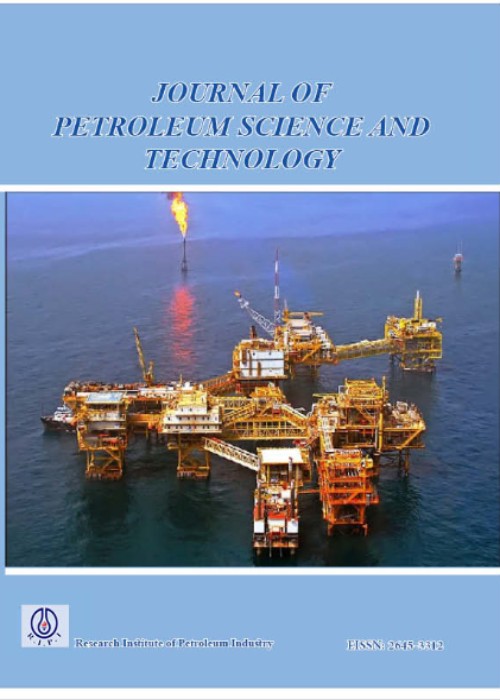Recognition of Oil Traps in the Kopet-Dagh Basin (Northeastern Iran) Using Fusion of Seismic Attributes, Petrophysical Logs and Geological Data
Author(s):
Article Type:
Research/Original Article (دارای رتبه معتبر)
Abstract:
Integrated analysis of oil traps, especially those related to facies changes, is far more complicated than reservoirs related to structural traps. The most useful way to identify these complex subsurface structures directly related to facies change is to use seismic attributes. The main goal of this study is to integrate analysis of traps and their relationship with sedimentary facies, and to achieve this goal, petrographic, petrophysical, and seismic studies were integrated. Based on petrographic studies, five petrofacies, including Micro-Conglomerate, Sandstone, Claystone/ Shale, Sandy Dolomudstone, and Sandy Dolomitic Ooid Grainstone/Hybrid, which were identified in connection with the supratidal, intertidal, lagoon and fluvial environments and the main factor controlling the reservoir quality is primary sedimentary texture. A total of 11 microfacies, including anhydrite (MF1), dolomudstone (MF2), packstone peloid/ooid (MF3), packstone oncoid/peloid (MF4), dolostone (MF5), grainstone peloid/ooid (MF6), grain stone oncoid (MF7). Microbialite (MF8), boundstone (MF9), bioclastic packstone (MF10), and mudstone (MF11) were introduced for the Mozduran formation. The facies’ matching of the Shourije Formation with seismic attributes shows that the energetic parts of the fluvial Channel are related to coarse-grained sandstone and conglomerate facies, and the fine-grained shale sediments have played the role of cap rock and caused the formation of stratigraphic traps along the fluvial Channel. The reef structures identified in the Mozduran Formation indicate two depositional environments: a carbonate shelf and a carbonate bank. Grainstone peloid/ooid, grain stone oncoid. Microbialite and boundstone facies are associated with the reef core, shoal, and lagoon and have good reservoir quality. Therefore, by using seismic attributes, it is possible to examine all types of subsurface structures and their relationship with the Stratigraphic Traps. The results showed that generalized spectral decomposition performed well for the geometric detection of buried channels and reef structures. At the same time, the instantaneous frequency indicates the unconformity boundary, and the variance attribute can effectively be employed for identifying fractures.
Keywords:
Language:
English
Published:
Journal of Petroleum Science and Technology, Volume:12 Issue: 4, Autumn 2022
Pages:
25 to 41
https://magiran.com/p2616284
دانلود و مطالعه متن این مقاله با یکی از روشهای زیر امکان پذیر است:
اشتراک شخصی
با عضویت و پرداخت آنلاین حق اشتراک یکساله به مبلغ 1,390,000ريال میتوانید 70 عنوان مطلب دانلود کنید!
اشتراک سازمانی
به کتابخانه دانشگاه یا محل کار خود پیشنهاد کنید تا اشتراک سازمانی این پایگاه را برای دسترسی نامحدود همه کاربران به متن مطالب تهیه نمایند!
توجه!
- حق عضویت دریافتی صرف حمایت از نشریات عضو و نگهداری، تکمیل و توسعه مگیران میشود.
- پرداخت حق اشتراک و دانلود مقالات اجازه بازنشر آن در سایر رسانههای چاپی و دیجیتال را به کاربر نمیدهد.
In order to view content subscription is required
Personal subscription
Subscribe magiran.com for 70 € euros via PayPal and download 70 articles during a year.
Organization subscription
Please contact us to subscribe your university or library for unlimited access!


